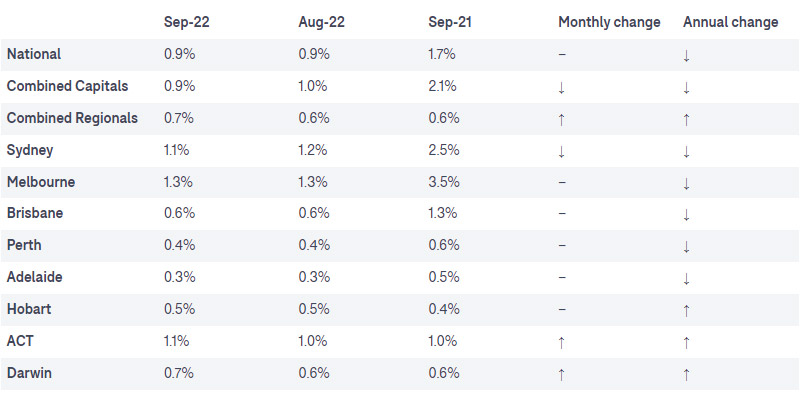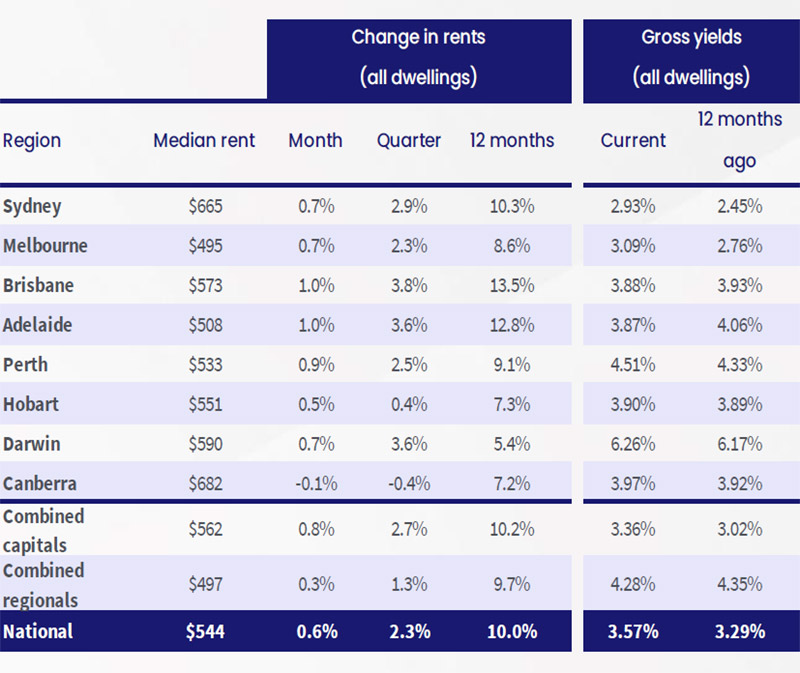Rising rents, falling vacancy rates keep breaking records
Vacancy rates nationally are below the landmark 1 per cent figure, while rents continue to break records in every state capital city.
Renters wishing to escape the seemingly never-ending run of bad news about unaffordable rents might want to move to Melbourne or Adelaide for a small degree of relief.
Melbourne remains Australia’s most affordable capital to rent a house in ($518 per week), while Adelaide is the most affordable city to rent a unit at $423 per week.
That suggestion comes with the caveat that actually finding an available rental will not be easy. Adelaide’s vacancy rate is at a chronically low 0.3 per cent (slightly worse than Perth at 0.4 per cent), while Melbourne renters are contending with a vacancy rate of 1.3 per cent.
The national vacancy rate has held at the lowest point on record at 0.9 per cent, according to Domain’s September Rental Vacancy Rate Report.
With a healthy vacancy rate deemed to be in the range of 2 to 3 per cent, the fact no capital city has a rate above Melbourne’s highlights the scale of the rental crisis enveloping the country.
Rental Vacancy Rates - September 2022

Source: Domain, October 2022.
Meanwhile, rental prices set new records every month.
CoreLogic’s Quarterly Rental Review for Q3 2022, released Monday (10 October), shows the national rental index was up another 0.6 per cent in the month to September and 2.3 per cent over the September quarter.
Although last month was the smallest monthly increase this year, the annual growth trend in national rents held steady at record high 10 per cent in August and September.
Affordability limits
CoreLogic Research Analyst and report author Kaytlin Ezzy said the easing in rental growth was a little surprising, particularly given such low vacancy rates.
“The slowdown in the rate of rental growth may suggest an increasing number of prospective tenants are starting to come up against affordability constraints,” she said.
“As high non-discretionary inflation, along with increasing rents put additional stress on a renter’s balance sheet, it is likely a growing number of tenants look to reform larger households or find more affordable rental options in an attempt to reduce costs.”
Seven of the eight capitals saw dwelling rents rise over the quarter and year. Canberra was the only capital city market which recorded a quarterly fall in dwelling rental values (-0.4 per cent), driven by a 0.9 per cent decline in house rents.

Source: CoreLogic.
Brisbane unit rents recorded the strongest quarterly growth rate in September (4.6 per cent), while Adelaide and Brisbane tied for the strongest rise in house rents (3.6 per cent).
Sydney overtook Canberra as Australia’s most expensive unit rental market ($594 per week), while Canberra remains the most expensive capital to rent a house in (730 per week).
Sydney was also the only city to see a decline in September, its third consecutive monthly fall, to a record low vacancy rate of 1.1 per cent, worsening an already competitive environment.
Brisbane’s vacancy rates remain steady at a record low of 0.6 per cent for the fifth successive month with the number of vacant rentals seeing an increase. Canberra and Darwin were the only cities to record an increase in vacancy rates, to 1.1 per cent and 0.7 per cent respectively.
Commenting on the findings, Domain Chief of Research and Economics, Dr Nicola Powell said we are seeing the stabilisation of vacancy rates which could indicate a turning point for tenants – but not just yet.
“All capital cities continue to operate in a landlords’ market, resulting in a highly competitive environment for prospective tenants.
“This is largely due to a misalignment between supply and demand with a lower volume of available rentals driving up rents and worsening competition.”
Yields yelling to investors
For investors wrestling with higher interest rates, there has been some respite through higher rental yields.
Gross rental yields continue to expand, with rental values rising as housing values depreciate.
National dwelling values fell 4.1 per cent while national dwelling rental values rose 2.3 per cent over the September quarter, resulting in a rise in dwelling yields of 24 basis points to 3.57 per cent.
Ms Ezzy said while yields are above the record lows recorded in February (3.21 per cent) they are still well below the pre-pandemic decade average of 4.24 per cent.
“With interest rates expected to continue rising throughout the first half of 2023, it’s likely we’ll see further downwards pressure on housing values,” Ms Ezzy said.
“In this scenario it is likely rental yields will continue to improve with the combination of continued rental growth and falling values being a potential catalyst for national dwelling yields to return to long-term averages, which could help offset the highest mortgage costs investors are facing.
“Once interest rates have stabilised, higher yields coupled with lower values and stronger buying conditions, could entice more investors to enter the market, which would ultimately help raise rental supply.”




















